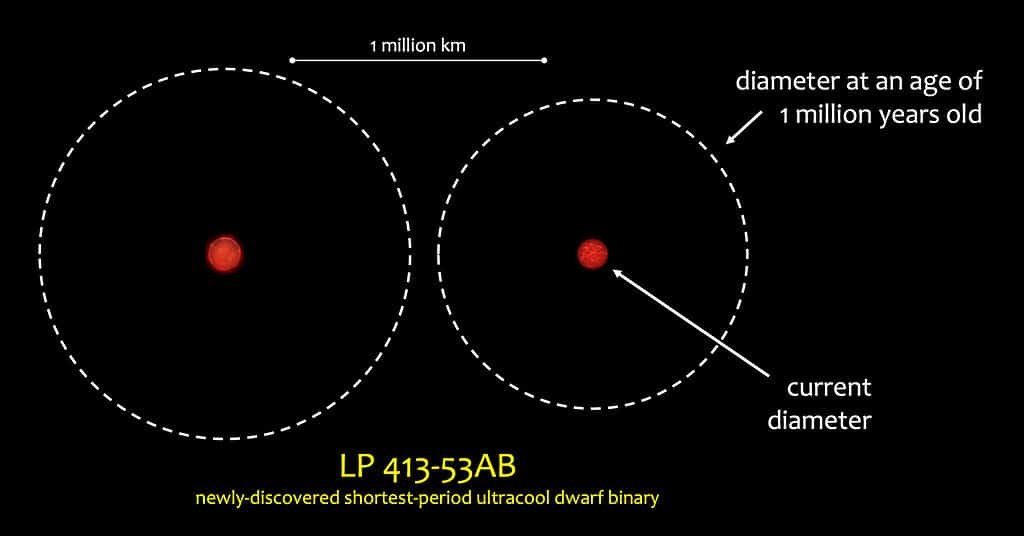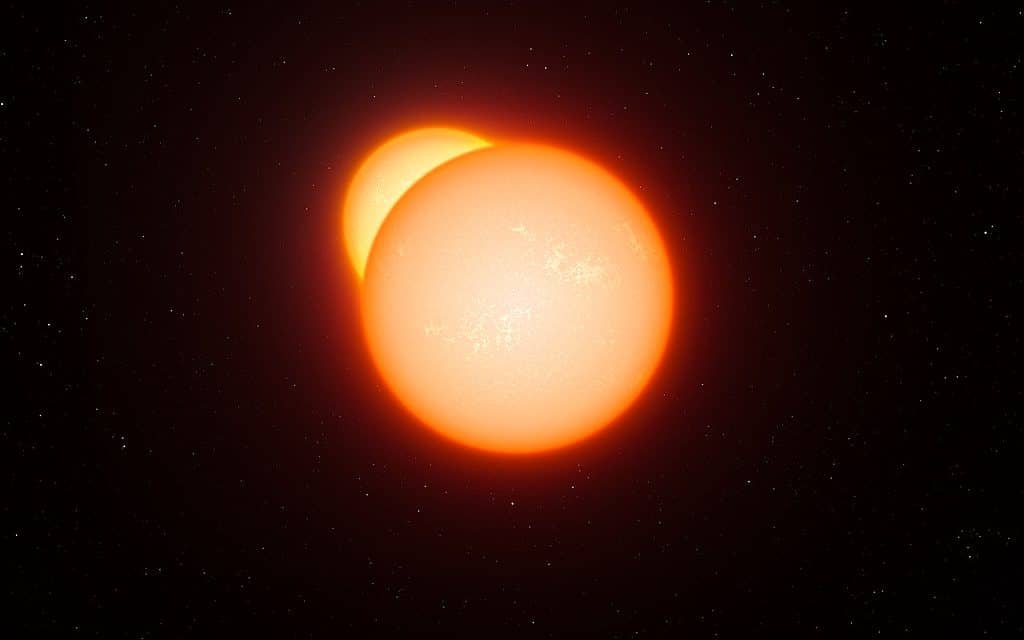If you ever thought the year just flew by, you’ve obviously never been to the LP 413-53AB star system. Astronomers from Northwestern and the University of California San Diego (UC SanDiego) have found the most compact ultracool dwarf binary system ever observed. The distance between the two stars, located in the constellation Taurus, is so small that it would take less than one Earth-day to revolve around both of them. Each ultracool dwarf star has a “year” that lasts only 20.5 hours.
“It’s exciting to discover such an extreme system,” said Chih-Chun Hsu, a Northwestern astrophysicist who led the study. “In principle, we knew these systems should exist, but no such systems had been identified yet.”
Ultracool dwarfs are a class of very low-mass stars that are so cool they emit their light primarily in the infrared, making them completely invisible to the naked eye. Nonetheless, they are one of the most common stellar varieties.
Until now, astronomers had only found three short-period ultracool dwarf binary systems, all of which are just up to 40 million years old, relatively young in the cosmos’ history. LP 413-53AB, on the other hand, is estimated to be billions of years old, about the same age as our sun. However, the new find has an orbital period at least three times shorter than all ultracool dwarf binaries discovered thus far.

The team first discovered the strange binary system while exploring archival data. Hsu had previously created an algorithm that can use spectral data to make a model of a star. Spectral data can be used to figure out a star’s chemical make-up, temperature, gravity and rotation by looking at the spectrum of light it sends out. This analysis also shows the star’s radial velocity, or how fast it moves toward and away from the observer.
Hsu originally thought there was only one star in the system because early observations caught it when the stars were roughly aligned and their spectral lines overlapped. Later spectral data showed, however, that the spectral lines had split into pairs as they had moved in opposite directions as the stars orbited the galaxy. Essentially, Hsu saw that the star system was actually made up of two stars.
“When we were making this measurement, we could see things changing over a couple of minutes of observation,” said Adam Burgasser, Hsu’s advisor while Hsu was attaining his Ph.D. at UC San Diego. “Most binaries we follow have orbit periods of years. So, you get a measurement every few months. Then, after a while, you can piece together the puzzle. With this system, we could see the spectral lines moving apart in real time. It’s amazing to see something happen in the universe on a human time scale.”
Hsu then investigated the phenomenon using the large telescopes at the W.M. Keck Observatory. The data supported Hsu’s predictions. The two stars are about one-hundredth as far apart as the distance between the Earth and the Sun.
“This is remarkable, because when they were young, something like 1 million years old, these stars would have been on top of each other,” Burgasser said.










